The Grand Tour of Senegal: Travel That Gives Back
10-06-2025
Senegal isn’t just another stamp in your passport. It’s the kind of place that invites you into the conversation – from streetside tea ceremonies in Dakar to sunrise pirogue (canoe) rides through the mangrove-lined waters of Casamance. The “Grand Tour of Senegal” is a popular travel circuit that offers a comprehensive, immersive journey through the country’s diverse landscapes, cultures, and heritage sites.
From the lively streets of Dakar and the haunting beauty of Gorée Island to the pink waters of Lac Rose and the lush greenery of Casamance, this tour offers a deep dive into Senegal’s diverse heritage. Through “Solidarity Tourism,” the Senegalese government takes a transformative approach to travel that bridges cultures and uplifts communities. Perfect for first-timers and seasoned travelers alike, the Grand Tour of Senegal combines aspects of city life, wildlife, and traditional villages for an unforgettable West African adventure.
Here is an overview on the destinations that is included in the Grand Tour of Senegal.
Table of Contents
- 1. What is Solidarity Tourism?
- 2. Teranga: Senegal’s Heartbeat of Hospitality
- 3. Dakar: West Africa’s Cultural Powerhouse
- 4. Ngor and Yoff: Coastal Twins with Dakar Heart
- 5. Goree Island: Where the Past Lives in the Present
- 6. Lac Rose: Senegal’s Pink-Hued Wonder
- 7. Shell Island Serenity: Joal-Fadiout’s Quiet Magic
- 8. Shop the Story, Not the Souvenir
- 9. Unmissable Festivals of Senegal
- 10. Bandia Wildlife Reserve: Safe, Scenic, and Perfect for First Timers
- 11. Casamance: Senegal’s Lush Southern Secret
- 12. How to Travel Senegal Responsibly
- 13. FAQs to Assist in Planning Your Route Along the Grand Tour of Senegal
What is Solidarity Tourism?
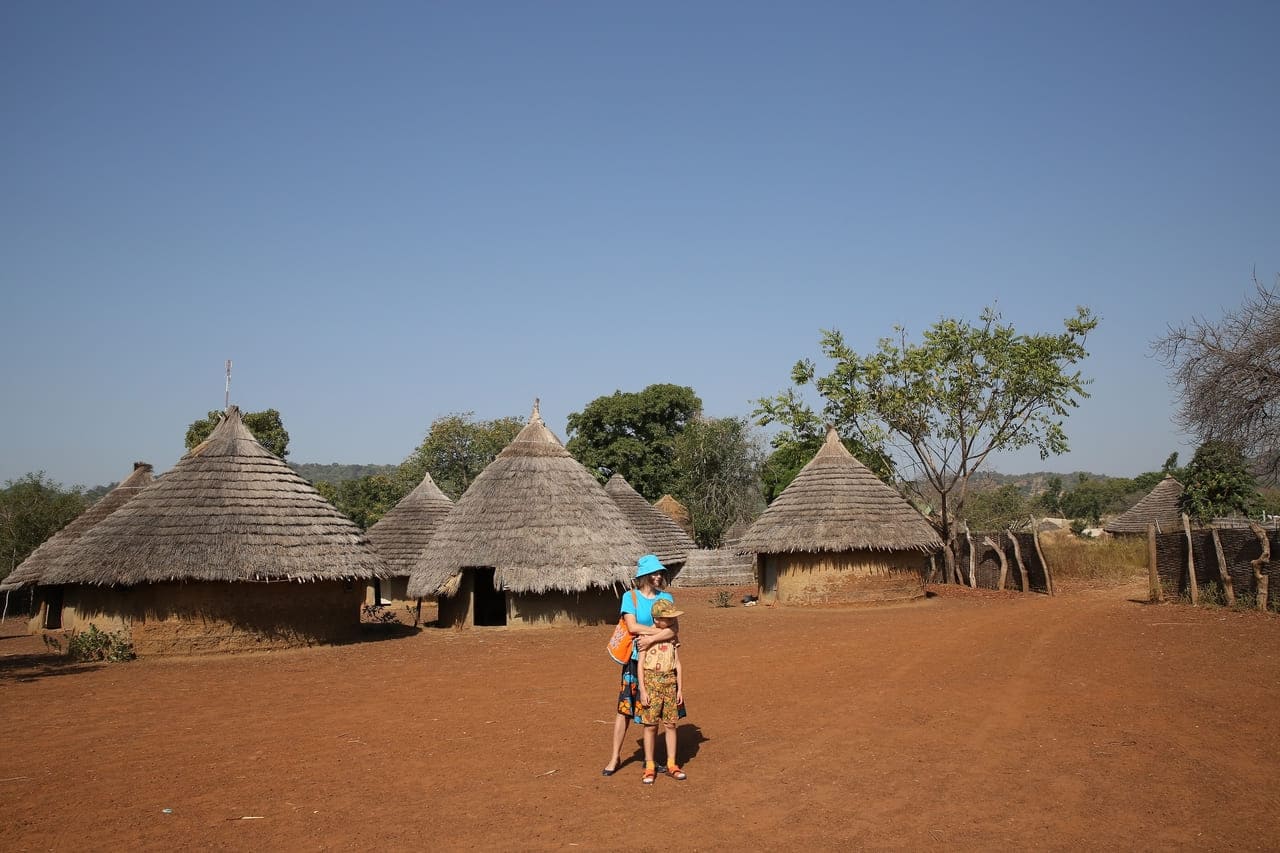
Solidarity Tourism means ditching the spectator seat and getting hands-on. These aren’t polished tours, they’re real-life moments.
If you’re someone craving a travel experience with purpose, solidarity tourism in Senegal may just change how you see the world. This is not your standard vacation. This is a call to connect, to contribute, and to come alive. Travelers can stay and experience the country for 1-2 week and go beyond Dakar to truly understand Senegal’s identity.
If you’re seeking travel with depth, stories over selfies, and connection over convenience, plan your trip to Senegal with Flying Carpet Travel. Book enriching experiences like learning drumming from the local masters, paddling out with fishers at dawn, helping harvest baobab fruit with women’s cooperatives or exploring Stellenbosch Town Centre with a local postcolonial historian that will leave your hands tingling and your heart full.
Teranga: Senegal’s Heartbeat of Hospitality
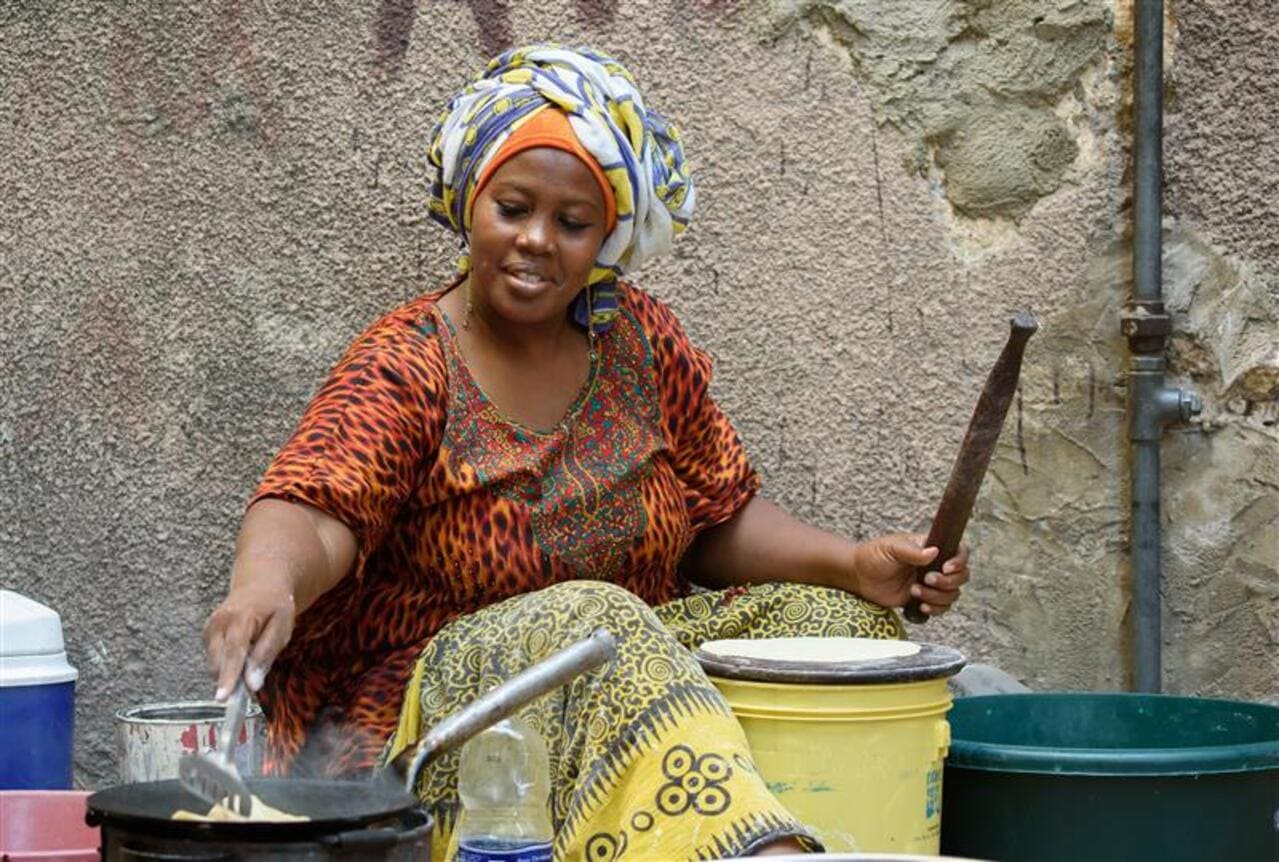
Sure, the American South is known for its warm welcomes, but Senegal’s version of hospitality called Teranga, takes it to another level. More than a word, it’s a philosophy. Expect strangers to smile and offer directions, hosts to pile your plate high with thieboudienne (spiced fish and rice), and families that invite you to local weddings or village ceremonies, even if you just met.
Tip: Stay in community-run lodges in regions like Casamance or Toubacouta to experience warm hospitality, and in return, directly support the host families.
From Bustling Dakar to Slow-Flow Casamance
Senegal is as varied as it is vibrant. In Dakar, the city hums with street art, Afrobeats, fashionistas, and midnight dance floors. A few hundred miles south in Casamance, life slows – think tidal creeks, palm-shaded villages, and Diola traditions that feel untouched by time.
Dakar: West Africa’s Cultural Powerhouse
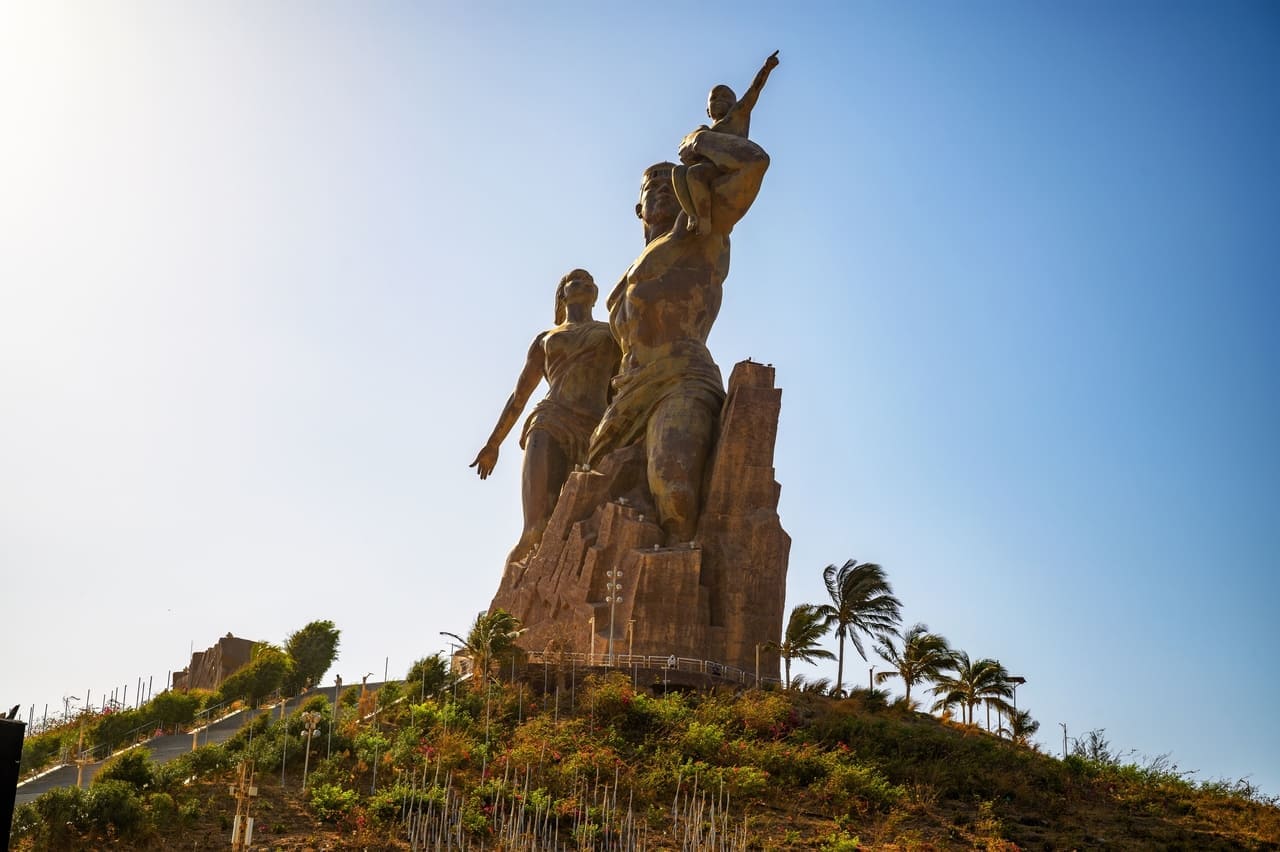
The street art scene in the capital city Dakar rivals any in the world. Wander through neighborhoods like Medina, where murals burst across walls and alleyways tell stories in color. As the sun dips, head to the African Renaissance Monument, a towering symbol of pride that’s even more powerful when viewed at golden hour. The panoramic view of the Atlantic and city skyline from the top of the monument is worth the climb.
Visit the Musée des Civilisations Noires, a striking space that reclaims Africa’s narrative through bold art, ancient artifacts, and contemporary installations.
By night, Dakar transforms. From smoky jazz lounges to high-energy Afrobeat clubs, this city hums with rhythm and soul. Catch a live sabar drumming session or sip bissap cocktails while watching a rooftop dance performance.
Goree Island: Where the Past Lives in the Present

Senegal doesn’t shy away from its painful history. Just beyond Dakar, a visit to the Gorée Island makes for a moving day trip. When you stand in the echoing halls of Maison des Esclaves (House of Slaves) with a local guide, the emotional weight of the transatlantic slave trade stories brings healing to the experience.
Shell Island Serenity: Joal-Fadiout’s Quiet Magic

As an off-the-path tour, travel to Joal-Fadiout, the twin villages located 110 km south of Dakar. It offers one of Senegal’s most peaceful and unique cultural experiences. Connected by a long wooden bridge, Joal, which rests on the mainland is the birthplace of Senegal’s first president Léopold Sédar Senghor. Fadiout on the other hand, sits on an island made entirely of centuries-old oyster and clam shells. Wander the shell-covered streets, where homes and alleyways shimmer with white fragments, and discover a village where Christianity and Islam coexist in remarkable harmony. From Fadiout’s large church and mosque to its shared cemetery on a separate shell island, Joal-Fadiout is a living testament to tolerance, tradition, and tranquil beauty.
Ngor and Yoff: Coastal Twins with Dakar Heart
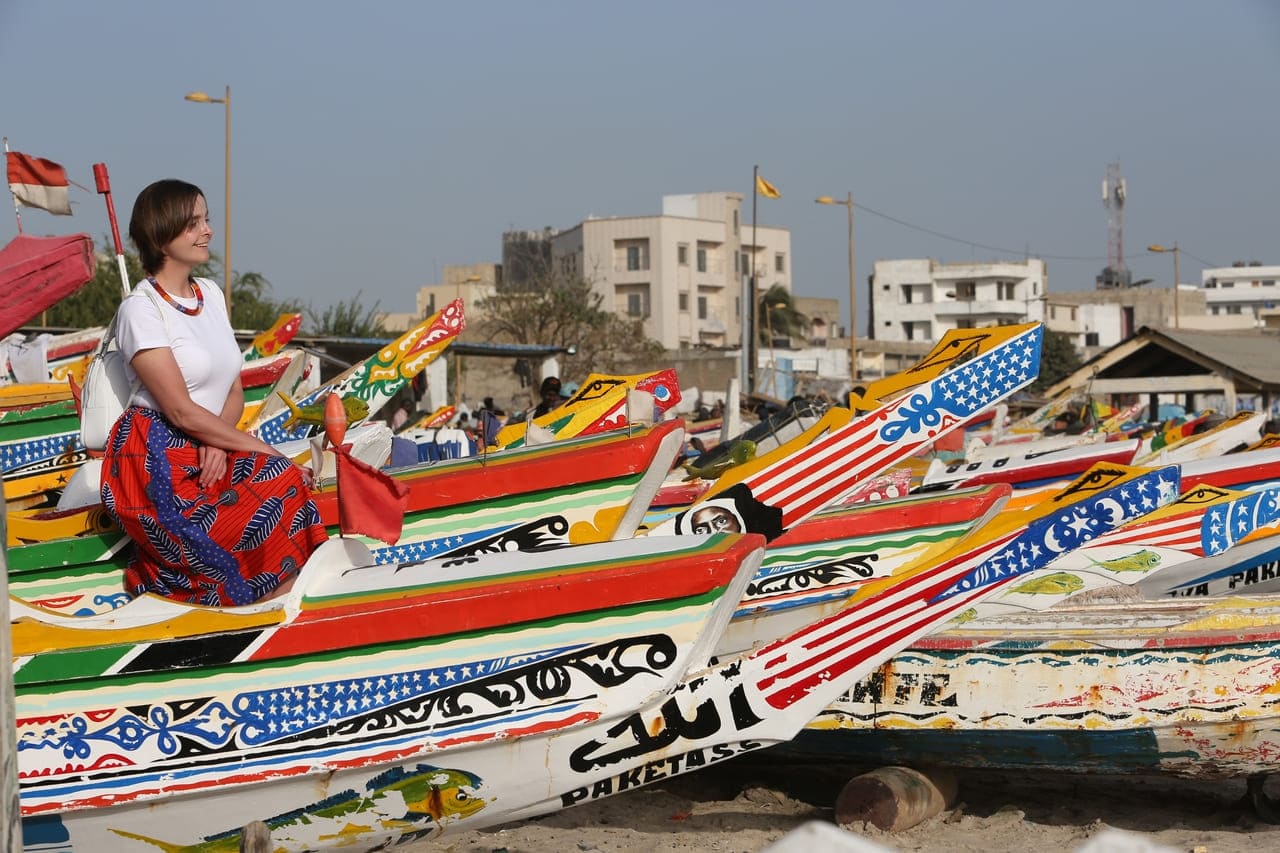
Just beyond Dakar’s city buzz, Ngor Island and Yoff Beach offer a gentler pace. Ngor, with its breezy beach bars and boats bobbing toward tiny Ngor Island, is a surf-friendly enclave where laid-back vibes meet Atlantic swells. A short hop east, Yoff stretches out in golden sand and daily ritual, where fishermen haul in catches at dawn, children play under the watchful spirit of the Layene Brotherhood, whose spiritual roots shape the community. Together, these neighboring spots promise a deeper connection to Dakar – surf with locals, try a beachside thieboudienne, or join a fishing community at dawn. These are places where every handshake feels like an invitation.
Take a walking tour in this solar-powered island where the only background noise is of the waves from the Atlantic.
Shop the Story, Not the Souvenir
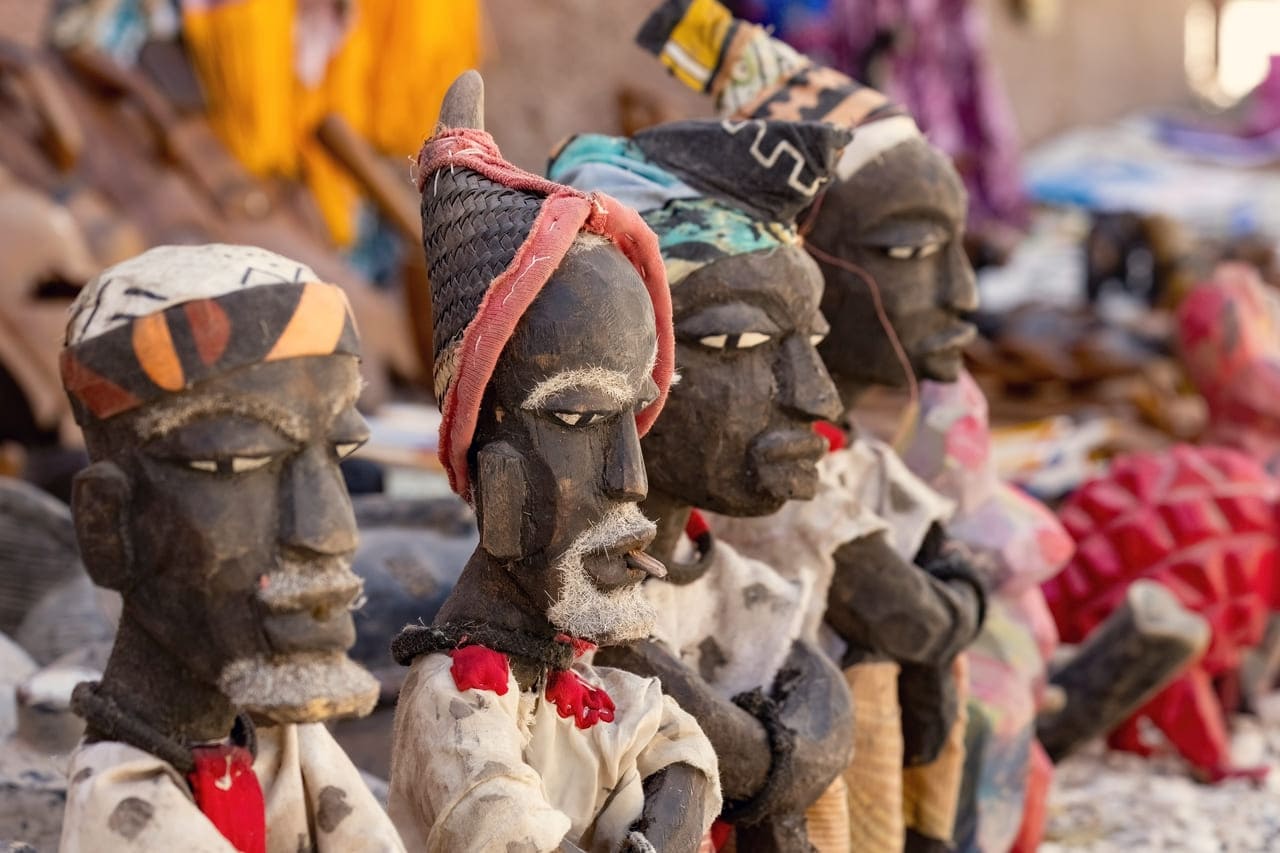
If you are looking for sandals, slippers, bags handmade painted scarves or napkins, browse the vibrant stalls of Sandaga Market in Dakar where fabric vendors, spice sellers, and bead artisans call out from under colorful umbrellas.
In Senegal’s markets, every item has a backstory – from leather sandals crafted in Ngaye Mekhé to vibrant wax fabrics at Dakar’s Marché HLM. If you are looking for handmade wooden sculptures or instruments, Soumbedioune is your go to place. Instead of mass-produced souvenirs, we suggest you buy directly from the craftsmen and carry part of the artisan’s legacy. If you need assistance in English and French interpretation, we are here to assist you to help you shop without worrying about language barriers. Book a shopping tour with us.
Unmissable Festivals of Senegal
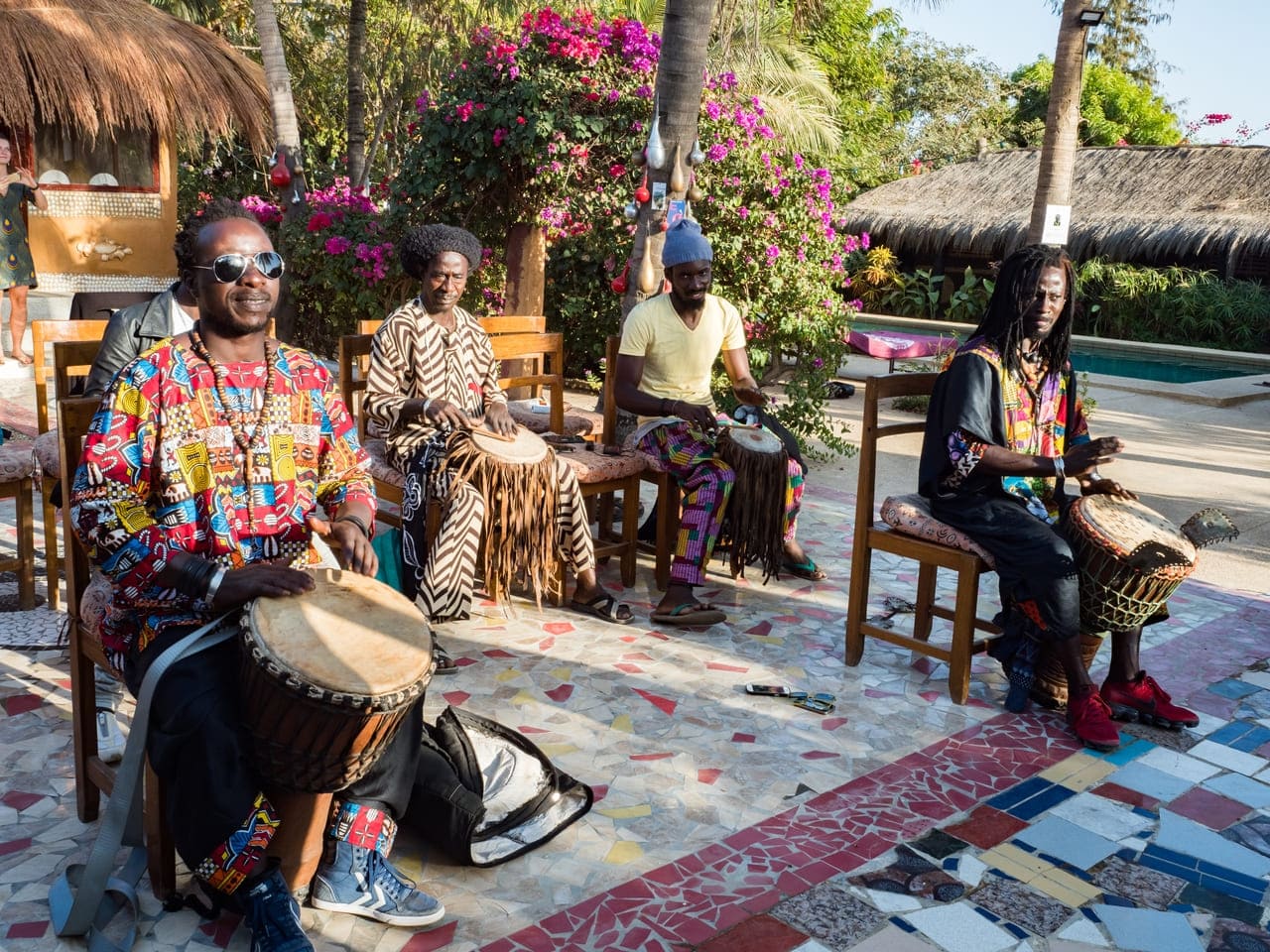
In Senegal, celebration is a way of life. Festivals here are community-wide expressions of culture, memory, and joy. Saint-Louis Jazz Festival draws global musicians to this colonial-era city every spring, while Dak’Art, Africa’s leading contemporary art biennale, transforms the capital into an open-air gallery of bold, boundary-pushing work. In between, you’ll find wrestling matches with drumming troupes, Mbalax-fueled street parades, and religious gatherings like Grand Magal of Touba that unite millions in faith and festivity.
If you’re visiting during Tabaski (Eid al-Adha), expect open doors and full plates. Say yes to every invitation, you’ll experience Teranga at its best.
Experience Ker Lep Jamm – a soulful guesthouse near Dakar where authentic African culture, nature, and meaningful exchanges come together through art, movement, and community.
Lac Rose: Senegal’s Pink-Hued Wonder
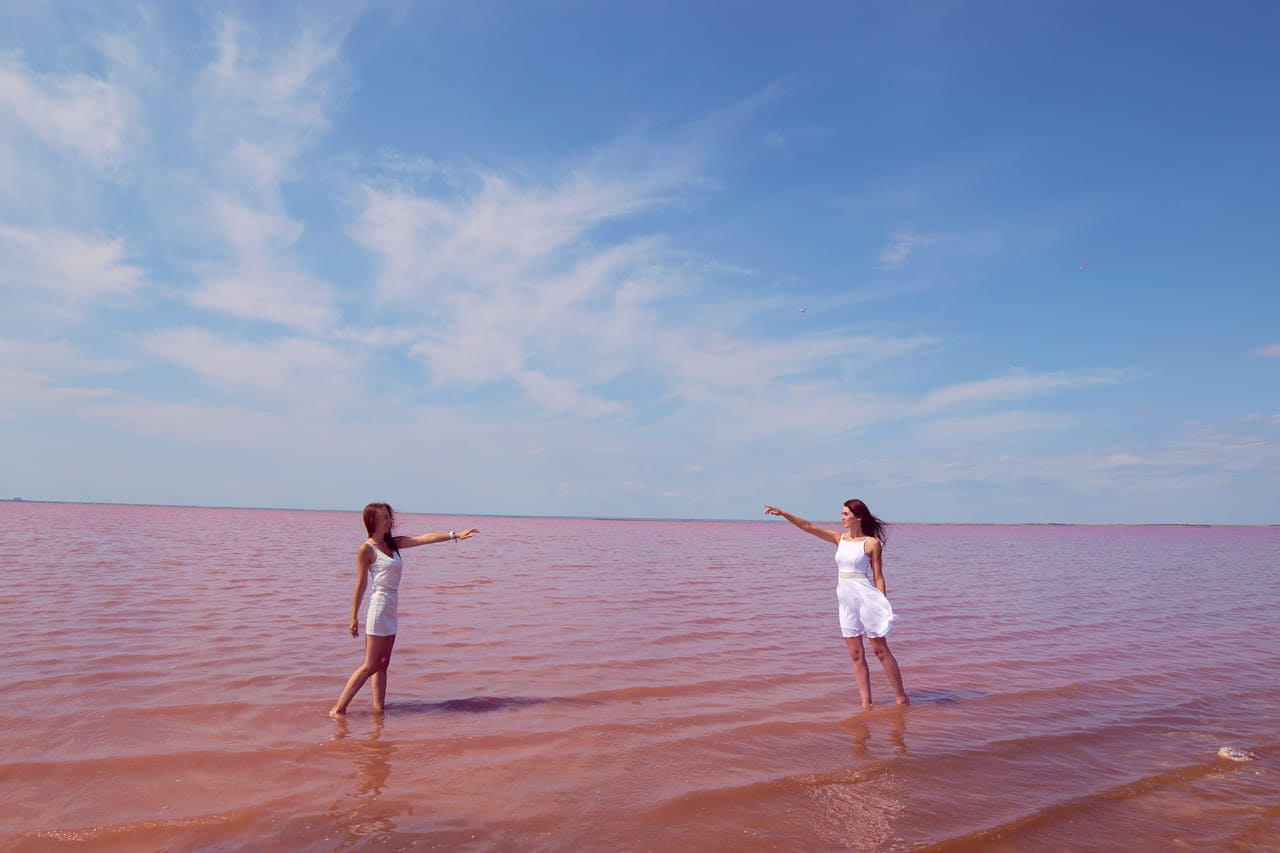
Lac Rose (Lake Retba) shimmers in shades of blush and rose gold under the sun, especially during the dry season. This lake located 30 km northeast of Dakar, is one of Senegal’s most surreal natural wonders. Besides its striking pink hue, due to the high concentration of salt, the lake takes second place for salinity (380 g/liter) after the Dead Sea.
You can visit the salt harvesters at work, explore the lake by paddleboat, stop to visit a Fulani village or ride dunes by 4×4 for views that blur the desert and the Atlantic Ocean. This path that was once the finish line for the Paris-Dakar Rally, which is still a favorite for adventure-seekers and culture lovers alike.
Book a trip to Lac Rose and Noflaye Tortoise Park.
Bandia Wildlife Reserve: Safe, Scenic, and Perfect for First Timers
Just over an hour from Dakar, Bandia Wildlife Reserve is a brilliant pick for first-time safari-goers and families with curious kids in tow. Compact and easy to navigate, this 3,500-hectare sanctuary trades the drama of predators for the charm of giraffes nibbling treetops, zebras trotting through acacia groves, and rhinos lumbering past ancient baobabs. With no big cats around, it’s a stress-free, kid-friendly safari where the thrills come without the worry. Hop into a guided 4×4, snap photos from open-air viewpoints, and wrap up with lunch at the shaded restaurant overlooking the bush. Book a Bandia tour that offers a safe and soulful taste of the safari life, without the need for malaria pills or long-haul drives required.
Casamance: Senegal’s Lush Southern Secret
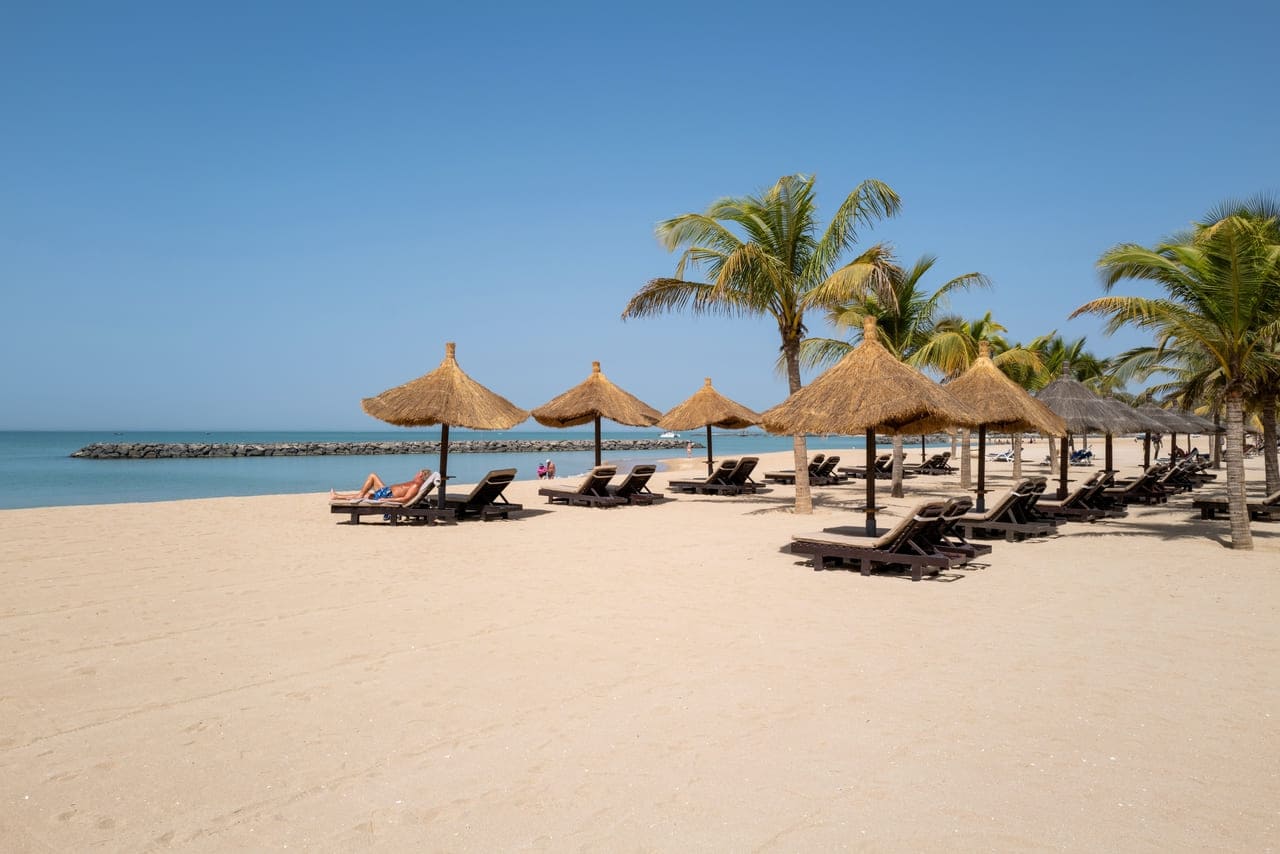
Lush green Casamance in southern Senegal invites travelers to slow down and connect with Senegal’s cultural and natural soul. Drift through mangrove-lined waterways in a pirogue, explore Diola villages like Oussouye with their sculptural mud houses, or relax on the unspoiled beaches of Cap Skirring. Here ancient customs are not preserved in museums but practiced in daily life — from sacred mask dances to rice cultivation in forest-clearings. Air Sénégal operates regular flights from Dakar (DSS) to Ziguinchor (ZIG) or Cap Skirring (CSK) to connect to Casamance.
How to Travel Senegal Responsibly

Exploring Senegal through the Grand Tour and Solidarity Tourism offers travelers more than just sightseeing – it’s an invitation to connect deeply with the country’s vibrant culture, resilient communities, and breathtaking landscapes. By choosing responsible, community-focused experiences, you not only discover Senegal’s rich heritage but also support local livelihoods and foster meaningful cultural exchange. Whether wandering historic streets, sharing meals with welcoming families, or contributing to sustainable projects, your journey becomes a powerful story of connection and positive impact—one that stays with you long after you leave Senegal’s warm shores.
Want to make your trip meaningful? Here’s how:
- Book with our locally owned or community-based operators
- Learn a few Wolof greetings (Nanga def? = How are you?)
- Avoid plastic, especially in coastal or rural areas
- Always ask before taking photos
- Tip generously, even for small services
To book stays, flights and experiences in Senegal, check out FlyingCarpet.Travel — where every journey supports a story worth telling. We recommend United Airlines to fly direct from Washington DC (IAD) to Dakar (DSS). If direct flights don’t fit your schedule, you can travel to Paris and book an Air Senegal flight to Dakar from Paris.
FAQs Before Planning the Grand Tour of Senegal
1. Will US citizens need a visa to travel to Senegal?
US citizens do not need a visa to visit Senegal for tourism purposes. You can stay visa-free for up to 90 days if your passport is valid for at least 6 months from your date of entry.
2. Is Senegal a safe country?
Yes, Senegal is considered one of the safest countries in West Africa for tourists. Local communities are welcoming, especially toward foreigners who respect their traditions. As always, traveling with responsible operators like Flying Carpet Travel enhances your safety and the quality of your experience.
3. When is the best time to visit Senegal?
The best time to visit is November to April, during the dry season when temperatures are pleasant, and many cultural festivals like the Saint-Louis Jazz Festival, Dakar Biennale, and Tabaski celebrations take place.
4. What should I pack for the Grand Tour of Senegal?
Pack modest clothes for rural areas, sunscreen, insect repellent, and basic meds, reusable water bottle, respectful curiosity and an open heart.
5. What is solidarity tourism?
Solidarity tourism is a form of responsible travel that prioritizes meaningful connections with local communities. It involves staying in community-run accommodations, participating in cultural exchanges, and supporting local cooperatives or artisans economically and socially.
6. Why should I choose solidarity tourism in Senegal?
Senegal offers a rich culture, warm hospitality (Teranga), and diverse landscapes, making it ideal for travelers seeking immersive and ethical experiences. By choosing solidarity tourism, you help empower local families, preserve cultural traditions, and contribute positively to the environment.
7. Is Solidarity tourism suitable for families or solo travelers?
Families can benefit from educational and hands-on activities, while solo travelers often find deeper connections and a sense of belonging in host communities. Homestays and small group settings create a safe and welcoming environment for all.
9. Do I need to speak French or Wolof to participate?
Learning a few Wolof greetings (like “Nanga def?” – How are you?) goes a long way in connecting with locals. Our experiences are led by English-speaking guides or interpreters to assist during your trip. Some even include language exchange or cultural immersion sessions.
